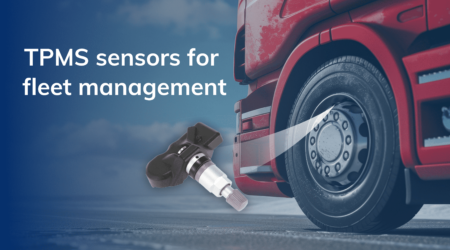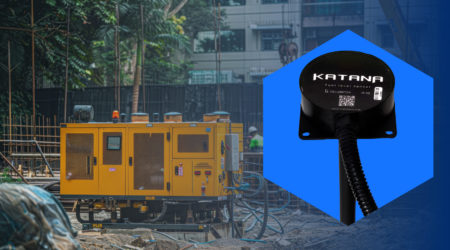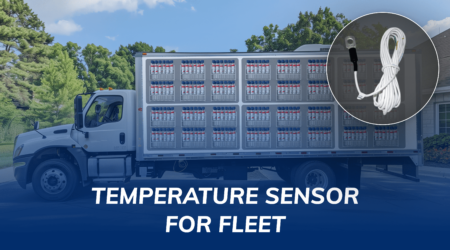Benefits of Temperature Control Sensor

In today’s rapidly evolving world, the ability to measure and control temperature precisely is more crucial than ever. Whether in the environments of healthcare facilities, the demanding production lines of manufacturing plants, or the comfort-oriented systems of residential and commercial buildings, temperature control sensors play an indispensable role. These advanced devices offer not just precision but also the versatility to adapt across various applications, making them indispensable in our daily operations. For an in-depth exploration of temperature sensor technology and its applications, our temperature sensor serves as a comprehensive resource, offering insights into the latest trends and advancements.
Understanding Temperature Control Sensor
What Are Temperature Control Sensors?
At their core, temperature control sensors are devices designed to measure and report temperature. This functionality is critical in environments where precise temperature management is essential for quality control, safety, and efficiency. From simple thermometers to sophisticated digital sensors interfacing with IoT platforms, these sensors come in various forms to suit different needs.
How They Work
The principle behind temperature control sensors involves detecting temperature changes and converting these changes into data that can be accurately measured and acted upon. This process involves physical properties that change in a predictable manner with temperature variations, such as resistance in thermistors or voltage in thermocouples.
Types and Evolution
There are several types of temperature control sensors, including thermocouples, thermistors, infrared sensors, and semiconductor sensors, each with its unique advantages and applications. The evolution of these sensors has been significantly influenced by technological advancements, making them more accurate, reliable, and easier to integrate into larger systems.
Transitioning from the basics to the core benefits of these sensors reveals their undeniable impact across industries. Their ability to offer accurate readings, cost efficiency, and enhanced safety among other advantages, underscores their importance. Let’s delve into these benefits to understand why temperature control sensors are more than just components; they are essential tools that drive efficiency, safety, and innovation.
The Benefits
Accuracy in Temperature Measurement
One of the most compelling advantages of modern temperature control sensors is their ability to provide precise and accurate temperature readings. This precision is paramount in industries where even the slightest deviation from the required temperature can lead to compromised product quality, safety hazards, or energy inefficiency. Accurate temperature control ensures processes are optimized, outcomes are consistent, and resources are used efficiently, contributing to overall operational excellence.
Cost Efficiency
Investing in advanced temperature control sensors can lead to significant cost savings in the long run. By enabling precise control over temperature, these sensors help reduce energy consumption, minimize waste, and prevent costly equipment failures or product spoilage. In industries like manufacturing and food processing, where margins can be tight, the efficiency gains from using these sensors can be a game-changer.
Versatility and Flexibility
Temperature control sensors are designed to be versatile and flexible, fitting a wide range of applications and environments. These sensors can adapt to monitor the cold chain during food transportation, ensure optimal conditions in a greenhouse, or manage the climate in a smart home, catering to specific needs. Their versatility also extends to compatibility with various control systems, allowing for seamless integration into existing operations.
Enhancing Safety
In environments where extreme temperatures can pose a risk to safety, such as chemical plants or refineries, these sensors provide critical data that helps prevent accidents. By monitoring and controlling temperature, they can help avoid overheating, fires, and other hazards, protecting both people and assets.
Environmental Monitoring
Beyond their immediate practical applications, temperature control sensors play a crucial role in environmental monitoring. They are used in weather stations, oceanography, and climate research to collect data on temperature trends, contributing to our understanding of climate change and environmental health. This data is essential for developing strategies to protect ecosystems and ensure a sustainable future.
Real-World Applications
The benefits of temperature control sensors translate into tangible advantages across a wide range of industries. Here are some key applications:
Healthcare
In healthcare, precise temperature control is vital for storing medications, vaccines, and samples. Temperature sensors ensure these materials are kept at optimal conditions to maintain their efficacy and safety.
Manufacturing
In manufacturing, sensors monitor and control the temperature of processes, machinery, and products. This precision prevents defects, ensures quality, and optimizes energy use.
Food Industry
Temperature control is critical in the food industry, from production to storage to transportation. Sensors help maintain food safety and quality by ensuring products are stored and transported within safe temperature ranges.
HVAC Systems
In buildings, temperature sensors are integral to HVAC systems, ensuring comfortable environments while optimizing energy use. They adjust heating and cooling based on real-time temperature data, improving efficiency and comfort.
Automotive Industry
In the automotive industry, temperature sensors monitor and control the engine’s temperature, cabin comfort, and battery systems in electric vehicles, contributing to performance, safety, and durability.
Trends in Temperature Control Technology
The landscape of temperature control technology is continually evolving, driven by the need for more efficient, reliable, and sustainable solutions. Here are some of the key trends that are defining the future of temperature control sensors:
Integration with IoT and Smart Technologies
One of the most significant trends is the integration of temperature control sensors with the Internet of Things (IoT) and smart technologies. This integration allows for remote monitoring and management of temperature conditions, providing real-time data and alerts that enable proactive adjustments. IoT-enabled sensors are revolutionizing industries by facilitating smart manufacturing processes, intelligent HVAC systems, and advanced healthcare monitoring. They are making operations more responsive, efficient, and cost-effective.
Miniaturization and Enhanced Sensitivity
As technology advances, sensors are becoming smaller, more sensitive, and more energy-efficient. This miniaturization allows for their incorporation into a wider range of applications, from wearable health devices to compact consumer electronics. Enhanced sensitivity improves the accuracy of temperature readings, even in challenging environments or over long distances, ensuring precise control and monitoring.
Sustainable and Energy-Efficient Solutions
Sustainability is a key driver in the development of new temperature control technologies. Innovations are focusing on reducing energy consumption, minimizing environmental impact, and improving the lifespan of sensors. Energy-efficient sensors contribute to lower operational costs and support sustainability goals, making them increasingly popular in eco-conscious industries.
Advanced Materials and Manufacturing Techniques
The use of advanced materials and manufacturing techniques is enabling the production of sensors that are more robust, durable, and capable of operating in extreme conditions. These improvements extend the applications of temperature sensors to harsh environments, such as deep-sea exploration, space missions, and industrial processes involving high temperatures or corrosive substances.
Predictive Analytics and Machine Learning
These technologies enable predictive maintenance, where data from sensors can forecast potential failures or issues before they occur, reducing downtime and maintenance costs. Machine learning models also optimize temperature control strategies based on historical data, enhancing efficiency and performance.
Choosing the Right Temperature Control Sensor for Your Needs
Selecting the appropriate temperature control sensor is crucial for maximizing benefits and ensuring optimal performance in your specific application. Consider the following factors:
- Accuracy and Range: Assess the precision and temperature range required for your application.
- Environment: Consider the environmental conditions, such as humidity, pressure, and potential exposure to chemicals or extreme conditions.
- Integration: Ensure the sensor is compatible with your existing systems and can be integrated smoothly.
- Cost: Evaluate the total cost of ownership, including installation, maintenance, and potential energy savings.
By carefully considering these factors, you can select a sensor that meets your needs and leverages the latest advancements in temperature control technology.
Conclusion
Temperature control sensors are at the heart of countless applications across industries, playing a pivotal role in enhancing efficiency, safety, and sustainability. As technology continues to evolve, staying informed about the latest trends and advancements is essential. For businesses and individuals alike, understanding and utilizing these trends can lead to significant advantages.
We encourage you to explore further and stay updated with the latest in temperature control technology. Here, you’ll find a wealth of information and resources to guide you in leveraging the full potential of temperature control sensors in your operations. As we move forward, the importance of these sensors will only grow, making it imperative to embrace and adapt to the evolving landscape of temperature control technology.



